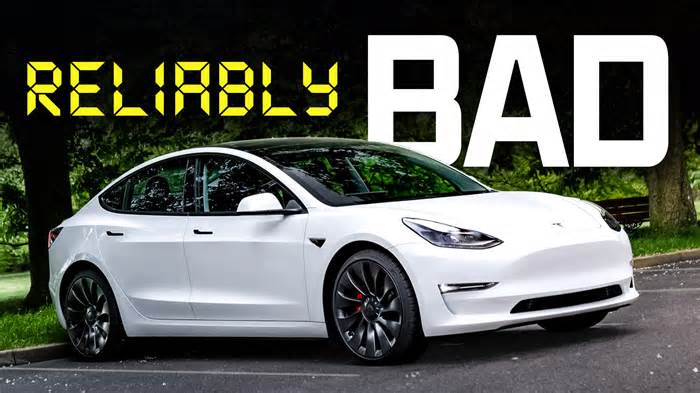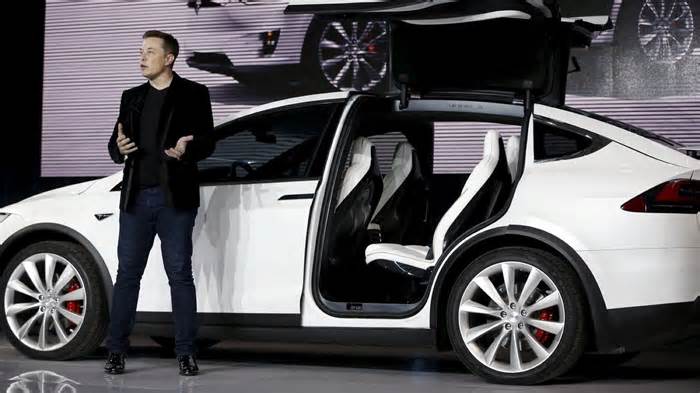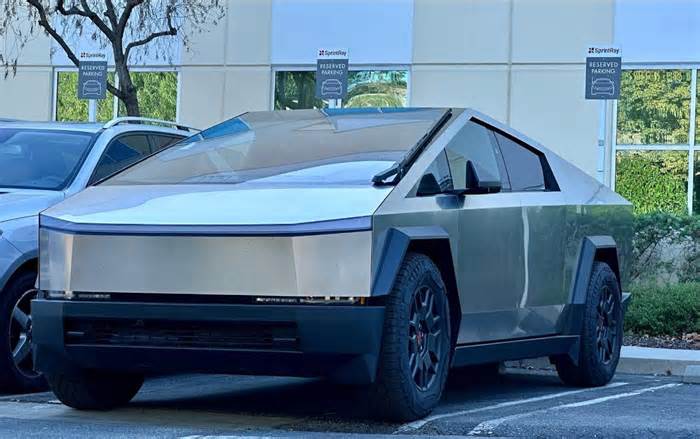
SpaceX engineered cheaper space flight, but startups are entering the market
- by Marketplace
- Nov 19, 2024
- 0 Comments
- 0 Likes Flag 0 Of 5

Getty Images
Writer Ashlee Vance explains how Elon Musk’s company disrupted NASA’s traditional role. With new competitors also shooting for the stars, “it's an exciting time,” he says.
get the podcast * Subscribe
President-elect Donald Trump has tapped Elon Musk to co-lead a new Department of Government Efficiency. And the CEO of Tesla and SpaceX, as well as the owner of X, does have a record of wringing efficiencies out of his businesses. But the move raises many questions, like should someone whose companies benefit from federal dollars have a hand in making budget decisions?
SpaceX alone has secured about $15.4 billion in government contracts over the last decade, helping it become the dominant player in the industry. So, how has SpaceX rocketed ahead of the competition, and can anyone catch up?
Ashlee Vance, author of “When the Heavens Went on Sale” and a writer for Bloomberg, points to reusable rockets, an innovation that was on spectacular display when SpaceX tested its Starship system last month. The following is an edited transcript of his conversation with Marketplace’s Meghan McCarty Carino.
Ashlee Vance: For most of the history of rockets, they’ve been disposable. It’s not like a plane. We’re used to planes obviously going back and forth, and you don’t throw them away. So about 15 years ago, SpaceX started working on this idea. Usually, these rockets divide into two stages. The biggest one that people see is the first stage, the bulk of the rocket, the tower. And so they decided they wanted to try to land that back on Earth. And about a decade ago, after five years of work, they really figured it out and started landing this booster back. This is on their Falcon 9 rocket, which is a bit smaller. And they’ve been doing it ever since, and they’re really the only company that has figured this reusability out.
Meghan McCarty Carino: And is this kind of the main component that has really enabled SpaceX to bring the cost of its launches down? I mean, how much cheaper is a SpaceX launch than what came before?
Vance: I’d say there’s a couple factors going in. So SpaceX’s main competition in the United States historically has been this company called United Launch Alliance. It’s a union of Boeing and Lockheed. It’s a government contractor. They charge about $300 million a launch. SpaceX has gotten the price for an equivalent rocket down to about $60 million a launch. So a huge savings there. Most of that really was just doing this in a more modern fashion, doing it less bureaucratically, having a more efficient workforce. But since then, the economics have got much more dramatic. So I think the current record for SpaceX is reusing the booster about 25 times of one rocket. And so, there is some cost associated with it. The booster comes back. It costs on the order of $30 million to make that first stage and then they’re spending only about $250,000-$500,000 to refurbish it and fly it again. So everybody else is paying for the whole thing, and SpaceX is just paying a small amount to reuse this bulk of the machine.
McCarty Carino: It is almost impossible to overstate how dominant SpaceX has become in this arena. But there are other private space companies in the rocket game, right?
Vance: Absolutely, it’s an exciting time. There’s lots.
McCarty Carino: How close are they coming to what SpaceX has been able to do, and what other innovations are they working on?
Vance: Yeah. I mean, in aerospace, you always have to be careful using “close” because everything seems to take longer than people suggest. But I would say another one of SpaceX’s main competitors is a company called Rocket Lab. Right now, they make a much smaller rocket called Electron. But as far as commercial space goes, they’re the only ones close. They’ve flown about 50 times. Everybody else is like one or two, and then SpaceX at hundreds. And so they have this rocket called Electron, it’s small. They have done some reuse on that, bringing it back with a parachute, reusing the engines. But their real focus is their next rocket called Neutron, which is meant to fly for the first time next year. And it’s reusable on the order of like a Falcon 9. And so I would say they’re the dominant competitors, not drastically different to what SpaceX does, but this would be a viable competitor. And then, one of the other most exciting startups is a company called Stoke Space, which is based in Washington state. They haven’t flown yet, but they are trying to reuse every component, so the first stage, the second stage that ends up going to space, and then what we call the fairing, which is like the container that holds a satellite, and bringing that back as well.
McCarty Carino: When we think about the model for innovation between, say, NASA or government missions and this new, burgeoning commercial space industry, the scale for commercial launches is obviously much bigger. There’s also a different incentive structure. These are profit-driven companies. How does that change the process of research and development?
Vance: It’s a dramatic time in this field. People had tried commercial space for 20 years and usually failed. And so SpaceX, Planet Labs, a few others have succeeded, and they are moving much faster. They are doing things much cheaper, and it’s putting into question some of the traditional jobs that, like, a NASA would do. NASA has been building a very large rocket called the SLS, the Space Launch System, and it costs many, many, many billions of dollars more than what SpaceX does. It’s had trouble flying. We all saw sort of the recent mishaps with Boeing and its capsule, and so there’s a case to be made that some of the things NASA has traditionally done should be maybe now left to these commercial companies, and NASA should focus on deep space science and exploration and giant telescopes and exploring the planets, things that really cater to its power as a scientific marvel. And so I think we’re in this transition period, and there’s still some sort of leftover legacy. To me, it feels like commercial space is doing things better, faster and cheaper than what the governments have done.
McCarty Carino: So we’ve talked about some of SpaceX’s competitors here in the U.S. What about globally? What does the competition look like?
Vance: It’s a really interesting landscape where you have, the U.S. is full of both the traditional government contractors, and then there’s tons of these rocket startups, satellite startups, and I would say is miles ahead. China has become a superpower in space, and so they have government-backed programs. If you’re talking about reuse, they’re actually probably second. They haven’t proven a lot of stuff yet, but they have multiple startups trying to make reusable rockets. Europe talks about these things, but is actually woefully behind on this front and it’s a cause for concern. They’re trying to get startups going. And then, oddly, because of this company Rocket Lab in New Zealand — New Zealand’s kind of turned into, like, a space superpower. They have a number of startups. So they’ve got the rockets and space planes and satellite projects. And so the U.S. right now is this bevy of frenetic activity and is ahead, and China is kind of second, and then the rest of the world really is in a tough spot when it comes to reuse and these new economics.
More on this
A New York Times story published shortly before the election untangles all of Elon Musk’s various links with the federal government, which go far beyond money and include regulatory actions and investigations over labor, environmental and safety issues related to his companies.
Stories You Might Like
Please first to comment
Related Post
Stay Connected
Tweets by elonmuskTo get the latest tweets please make sure you are logged in on X on this browser.
Sponsored
Popular Post
Tesla: Buy This Dip, Energy Growth And Margin Recovery Are Vastly Underappreciated
28 ViewsJul 29 ,2024






 Energy
Energy



















